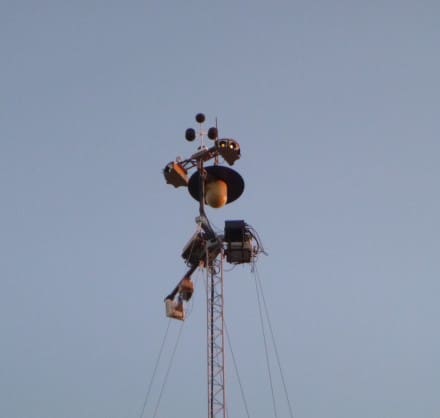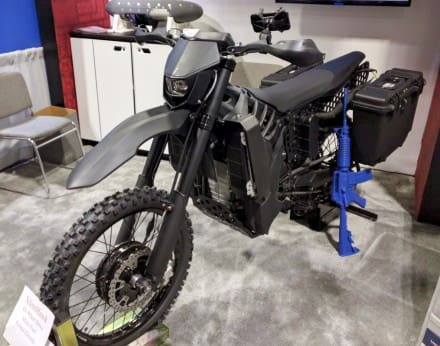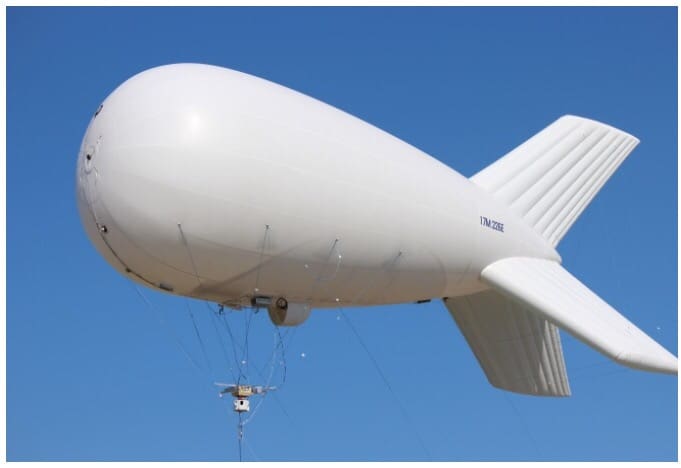My first job after retiring from the Air Force 10 years ago, was with Logos Technologies. At the time, a lot of the company’s work was focused on airborne, wide area imagery systems. It’s great to see how far they have come in developing other sensors. For instance, they developed the Serenity hostile fire detection system which fuses data from both EO/IR and acoustic sensors. Typical EO/IR-based Fire detection systems look for flashes, and these can present false detections due to things like reflections from glass. Acoustic sensors listen for certain sounds and can characterize types of fire as well as direction. By fusing the two sensors, not only are false detection rates lowered because they validate one another’s data but more information can be collected simultaneously. In the case of Serenity, a sensor from Hyperion Technology Group listens for an acoustic event within a certain time frame in order to validate the flash picked up by the optical sensor.

Initially, Serenity was mounted to aerostats, but there are a lot of places where you don’t want to park a dirigible over a facility. Consequently, the Army asked Logos to creat a mast mounted variant which can be attached to existing antenna towers at deployed locations. But, I can now imagine a lot of other places that could deploy this system, including fixed facilities. Naturally, there’s give and take here. A mast mounted version of Serenity makes it available to a wider audience, but it also means that the ranges they’ve seen with the aerostat variant will be much shorter. It just won’t be mounted as high, so line-of-sight is less. Although it’s still a ways off, the Logos Team told me that they see a mobile version in the future. In the near-term, Logos Technologies is also working on an export license for Serenity, now that it can be more easily deployed, which is great news for our allies.
Below is the press release on Serenity from Logos Technologies, LLC.
FAIRFAX, Va.–(BUSINESS WIRE)–Logos Technologies announced today that a new, tower-mounted version of its Serenity hostile fire detection system has passed a live fire test this past May in Yuma, Arizona.
Designed to detect sources of enemy fire, Serenity is typically mounted on a high-flying tethered blimp, or aerostat, in order to provide city-sized coverage area. With the latest modifications, the system now provides coverage from towers.
“In mounting the system on a lower altitude mast, we needed to compensate for differences in range, and we’ve succeeded in doing that,” says Frank Plew, Serenity project manager at Logos Technologies.
The success of the May demonstration now means that Serenity is one step closer to being put up on masts at U.S. bases and installations in combat zones.
“We’ve already delivered a total of 15 Serenity units to the Army,” says Plew.
A dual-sensor system, Serenity combines two electro-optical (EO) pods with an acoustic sensor, developed by Hyperion Technology Group, to help friendly forces better react to incoming enemy fire by locating its point of origin.
Serenity’s optical sensor picks up the flash of enemy mortar or rocket fire and then calculates its point of origin and range from the sensor. The system’s acoustic sensor will then validate that enemy fire has indeed been detected by measuring the lag time between flash and bang.
Working together, these two Serenity sensors dramatically reduce the false alarms typically associated with other hostile fire detection systems.
“There are legacy hostile fire detection systems out there, and while they’ve proven the concept, Serenity reduces false positives and does a better job pinpointing sources of enemy fire,” Plew says.
Serenity weighs less than 80 pounds, light enough to go on unmanned aerial vehicles. It can transmit its fused optical/acoustic data to available full motion video cameras or wide-area motion imagery (WAMI) sensors.
Logos Technologies began working with the Army Research Laboratory (ARL) on Serenity in 2013, with the mast work starting in 2015.
Although the original concept was for Serenity to go on an aerostat with the Kestrel WAMI system, “Logos Technologies and ARL always envisioned it going on other platforms,” Plew states.














































































































